Manual
Focus Nikkor 35mm
f/2.8s
wideangle lens
Generally,
lenses at 35mm focal length was among the earliest Nikkor lens group and they have
a long history in its lens development. The original 3.5cm f/2.8-16 Nikkor-S Auto lens was among the
first batch introduced with the reflex Nikon F camera back in 1959. The
current MF version carries an Ai-S spec. it is a light, compact wideangle lens and
is reputed for its high resolving power and high image contrast. The lens pictured
at left has an optical design of 5 elements in 5 groups (The original Non-Ai version of the 35mm f/2.8 introduced many years
back has a differing 7 elements in a 6 group optical design instead). Anyway, this
Nikkor wideangle lens combines variable practical factors of compactness, light weight,
a fair lens speed and most of all - among the few options of the Nikkor 35mm wideangles.
this lens is a very economical entry for you to go into wideangle photography. As a result of holding a constant
lens speed at f/2.8, the overall length of this lens is only 54mm and its weight
of 240 grams makes it one of the lightest and naturally it is also the cheapest wideangle
lens in the Nikkor wideangle lens system.
And that perhaps summarized why this wideangle lens was once so popular among Nikon photographers. By the time when the Nikkor AF lenses were introduced, this manual focus lens was the first among many of the MF Nikkor lenses at 35mm focal length being phased out. However, since the first AF Nikkor lens at 35mm focal length (AF Nikkor 35mm f/2.0) was only being introduced quite late in April, 1989, it forced many Nikon photographers who may have owned all those AF Nikon SLR bodies to live with manual focus Nikkor lenses at this focal length for their photographic needs. However, one main reason why Nikon was so indecisive to introduce equivalent optic in autofocus was the shift of attention to AF Zoom Nikkor lenses by users and the Company is quite realistic seeing there was no such urgency. |
Nikon skipped the 35mm focal length entirely in the autofocus updating program for Nikkor lenses during the entire early AF lens development period despite we've seen debut of other prime AF lenses such as the AF Nikkor 24mm f/2.8 (1988) and AF-Nikkor 28mm f/2.8 (1986) introduced much earlier than the 35mm. Why ? probably Nikon thought they had already released SIX AF zoom lenses which had focal length of 35mm well covered (AF-Nikkor Zoom 24-50mm, AF-Nikkor Zoom 28-85mm, AF-Nikkor Zoom 35-70 compact and a high speed f/2.8 lens, AF-Nikkor Zoom 35-105mm and AF-Nikkor Zoom 24-50mm 35-135mm). Further, they might also conclude lenses at 35mm focal length have less interest generated among new crop of AF camera users. Well, you can safely regarded the lens speed at f/2.8 at this 35mm focal length as obsolete now. Probably at the used market you may still find plenty of them with reasonably good cheap prices. Other than an even cheaper (with a slightly faster lens speed at f/2.5) Nikon Series E 35mm f/2.5s, this Nikkor 35mm f/2.8 lens could well be the cheapest original Nikkor wideangle lens you can get from the Nikkor lens family. (in fact, the Series-E 35mm f/2.5 resembles exterior look with the Nikkor lens) However, compared to the Nikon series E counterpart, the Nikkor undoubtedly has a much superior built quality and in its over all lens handling and/or performance.
Introduced in September, 1981, the AI-S spec version was seen as a direct upgrade from the revised optical formula of 5 elements in 5 groups design first used the AI version introduced earlier back in April, 1978. Generally, the lens has enjoyed a good reputation as a top grade wideangle lens. However, a physical handicap presented by this lens is, most people may feel its slow maximum aperture lens often restrict it to be an ultimate 35mm wideangle. It may need faster film type to work efficiently. However, that is not an issue when you are using the lens with flash where usually, midrange apertures are generally being used. Further, with today's high resolution fast film types, it should well compensate such slight technical drawback.Introduced in September, 1981, the AI-S spec version was seen as a direct upgrade from the revised optical formula of 5 elements in 5 groups design first used the AI version introduced earlier back in April, 1978. Generally, the lens has enjoyed a good reputation as a top grade wideangle lens. However, a physical handicap presented by this lens is, most people may feel its slow maximum aperture lens often restrict it to be an ultimate 35mm wideangle. It may need faster film type to work efficiently. However, that is not an issue when you are using the lens with flash where usually, midrange apertures are generally being used. Further, with today's high resolution fast film types, it should well compensate such slight technical drawback. |
Technically, there is another 35mm wideangle lens with exacting lens speed of f/2.8 at this focal length - none other than the PC-Nikkor 35mm f/2.8 or the earlier PC-Nikkor 35mm f/3.5 (Perspective Control) lenses. However, this is is not entirely a normal lens but rather as an special application lens with tilt and shift capability to correct perspective but a major drawback of this version of the lens is, it cannot work in full aperture metering and requires stopped Down Metering in a Ai-spec Nikon SLR body. The original 35mm PC lens, introduced back in first quarter of 1960 also came with a f/3.5 lens speed. It was given a speed pump during mid seventies with a faster f/2.8 lens speed. Even within 35mm PC f/2.8 lens, there are actually two versions has been introduced by Nikon, there was an earlier version which has an optical design of 8 elements in 7 groups while the later version was revised to 7 elements in 7 groups. Don't ask me which one is better, I have never owned any of these PC Nikkor lenses, besides, these PC lenses work only in stopped down metering - perhaps someone out there will able to help us illustrate differences. Whatever it is, they are still an alternative for a 35mm focal length at exacting lens speed.
Some of
its main characteristic can be outlined as follows: *
62° picture angle meets a wide variety of photographic situations - from "grab-shot"
candids to carefully arranged group portraits, close-ups of flowers to overall landscapes,
travel photography to astrophotography. * Great for snapshots
with flash because its angle of view matches the coverage of most electronic flash
units. * Up to nearly 7X magnification
is possible by mounting the lens in reverse on a bellows unit. * Exceptionally light - weighs only 240 grams.
* Accepts popular 52mm
lens accessories such as the cheaper and readily available filters.
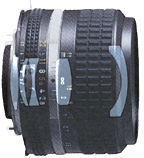 |
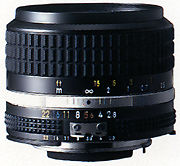 |
Specifications: |
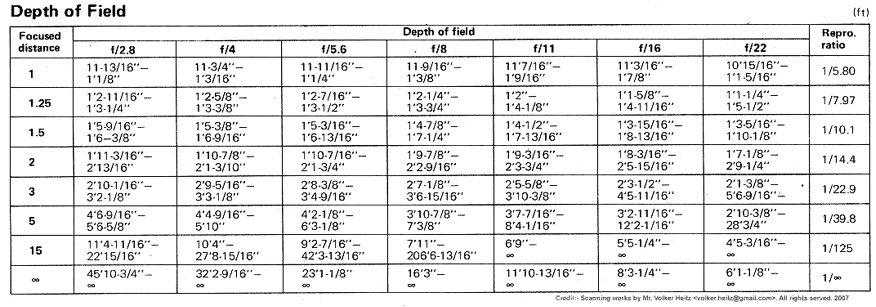

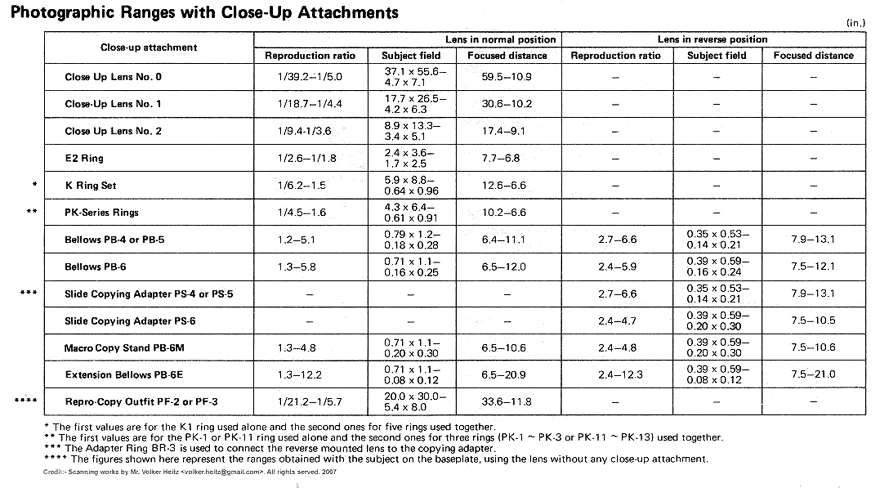
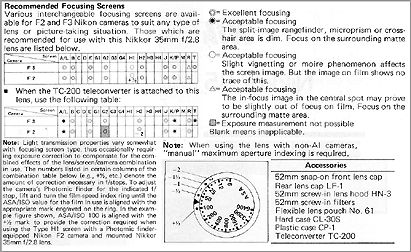 |
<<<--- Focusing usage guide for Nikkor 35mm f/2.8s |
Manual Focus Versions:- 35mm focal length Manual Focus Nikkor Lenses: | Early non AI version | Early to mid '70 Pre-AI | Late 1970 | Early 1980 - present: 35mm f/1.4s | 35mm f/2.0s, 35mm f/2.8s | Relative: PC-Nikkor 35mm f/2.8 and PC-Nikkor 35mm f/3.5; Relative:- AF Nikkor 35mm f/2.0s autofocus wideangle lens; AF Nikkor 35mm f/2.8D autofocus wideangle lens
| Back | to Main Index Page of MF Nikkor lenses at 35mm focal length
| Message Board |
for
your Nikkor
Optics
in a shared environment
| Message
Board
| Specifically for Dispose or Looking for new/used Nikon/Nikkor
photographic equipment
| Nippon Kogaku Rangefinder Resources | Nikon F | Nikon F2 | Nikon F3 | Nikon F4 | Nikon F5 | Nikon F6 | Nikkormat / Nikomat | Nikon FM Series | Nikon FE/ FA | Nikon EM/FG/FG20 | Nikon Digital SLRs | Nikon - Other models |
Nikon MF RF-Nikkor lenses for Rangefinder
cameras:-
Main Index Page
Nikon
Auto Focus Nikkor lenses:- Main
Index Page
Nikon
Manual
Focus
Nikkor lenses:-
Fisheye-Nikkor Lenses - Circular |
Full Frame |
Ultrawides Lenses - 13mm15mm18mm20mm |
Wideangle Lenses - 24mm28mm35mm |
Standard Lenses - 45mm 50mm 58mm | Telephoto Lenses
- 85mm105mm135mm180mm & 200mm |
Super-Telephoto Lenses - 300mm 400mm 500mm 600mm 800mm 1200mm |
 |
Special Application
lenses: Micro-Nikkor Lenses - 50mm~55mm -60mm 85mm -105mm 200mm Micro-Zoom 70-180mm Perspective Control (PC) - 28mm 35mm PC-Micro 85mm Dedicated Lenses for Nikon F3AF: AF 80mm f/2.8 | AF 200mm f/3.5 EDIF Depth of Field Control (DC): 105mm 135mm Medical Nikkor: 120mm 200mm Reflex-Nikkor Lenses - 500mm 1000mm 2000mm Others: Noct Nikkor | OP-Nikkor | UV Nikkor 55mm 105mm | Focusing Units | Bellows-Nikkor 105mm 135mm Nikon Series E Lenses: 28mm35mm50mm100mm135mm | E-Series Zoom lenses: 36~72mm75~150mm70~210mm |
MF Zoom-Nikkor Lenses: 25~50mm | 28~45mm | 28~50mm | 28~85mm | 35~70mm | 36~72mm E | 35~85mm | 35~105mm | 35~135mm | 35~200mm | 43~86mm | 50~135mm | 50~300mm | 70~210mm E | 75~150mm E | 80~200mm | 85~250mm | 100~300mm | 180~600mm | 200~400mm | 200~600mm | 360~1200mm | 1200~1700mm
Tele-Converters: TC-1 | TC-2 | TC-200 | TC-201 | TC-300 | TC-301 | TC-14 | TC-14A | TC-14B | TC-14C | TC-14E | TC-16 | TC-16A | TC-20E
Recommended links to understand more technical details
related to the Nikkor F-mount and production Serial Number:
http://rick_oleson.tripod.com/index-153.html by: my
friend, Rick Oleson
http://www.zi.ku.dk/personal/lhhansen/photo/fmount.htm by: Hansen,
Lars Holst
http://www.mir.com.my/rb/photography/hardwares/nikonfmount/lens2.htm
http://www.photosynthesis.co.nz/nikon/serialno.html
Recommended Reading Reference on Nikon cameras and Nikkor lenses | about this photographic web site
| | Back | Main Index Page of Nikkor Resources | Back | Main Index Page of Pictorial History of Nikon SLRs |
| Home - Photography in Malaysia |
![]() Co-developed
with my web buddy, Rick Oleson® &
Co-developed
with my web buddy, Rick Oleson® & ![]() Denmark, Creator of the Nikon
Repair Group Mailing-List;
A
contributing effort to Michael Liu's Classic Nikon SLRs and
Nikkor optic site.
Denmark, Creator of the Nikon
Repair Group Mailing-List;
A
contributing effort to Michael Liu's Classic Nikon SLRs and
Nikkor optic site.
Credit: MCLau®, who has helped to rewrite
some of the content appeared this site. Chuck Hester® who has been helping
me all along with the development of all these Nikon websites; Lars Holst Hansen, 'Hawkeye'
who shares the same passion I have; Ms Rissa, Sales manager
from Nikon Corporation Malaysia for granting permission to use some of the official
content; Ted Wengelaar, Holland
who
has helped to provide many useful input relating to older Nikkor lenses; Some of the references
on production serial numbers used in this site were extracted from Roland Vink's website; Hiura Shinsaku from Nikomat
Club Japan. Lastly,
to all the good people who has contributed their own expeience, resources or kind
enough granted permission to use their images of their respective optic in this site.
It is also a site to remember a long
lost friend
on the Net. Note:certain content and
images appeared in this site were either scanned from official marketing leaflets
& brochures published by Nikon and/or contribution from surfers who claimed originality
of their work for educational purposes. The creator of the site will not be responsible
for may discrepancies arise from such dispute except rectifying them after verification. "Nikon", "Nikkormat", "Nippon Kokagu
KK"
& "Nikkor" are registered
tradename of Nikon Corporation Inc., Japan. Site made with an Apple IMac.